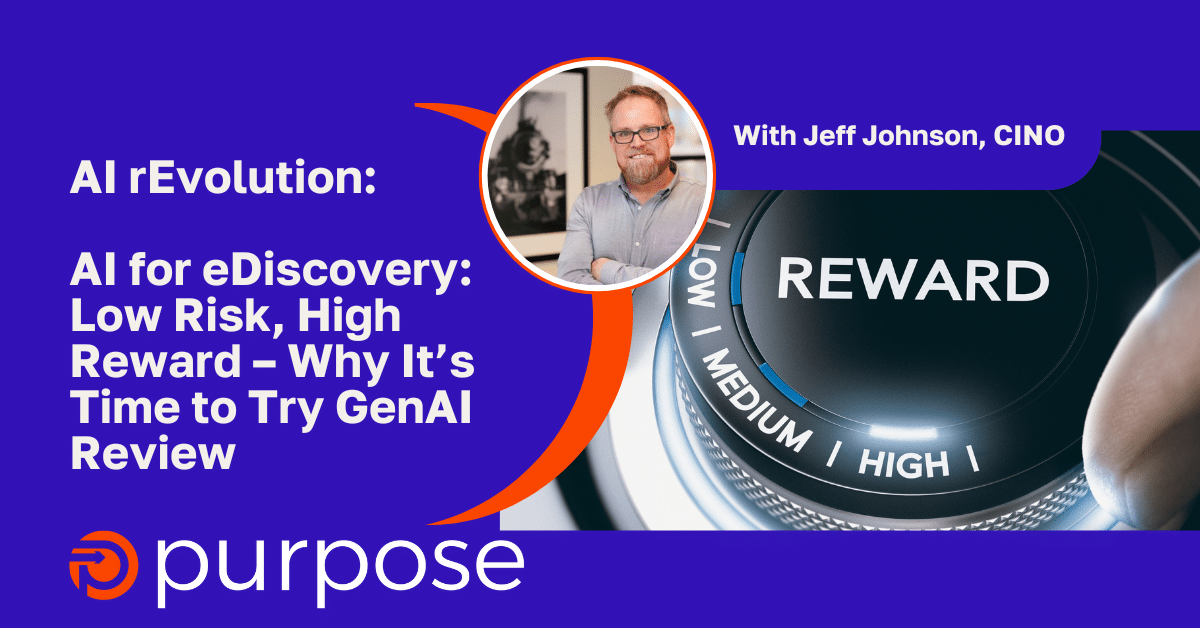By: Jeff Johnson, Chief Innovation Officer
Don’t let the press fool you. Everyone in eDiscovery still relies on long-trusted human review and technology-assisted approaches to complete most review work. At Purpose Legal, we remain committed to efficiency by using traditionally proven workflows and technologies.
AND… I feel excited to stand at the forefront of real-life implementation of GenAI-enabled tools in eDiscovery. We use these tools on actual reviews for actual matters, and I characterize this use, by virtually all involved providers, as an industry-wide proof of concept.
I wrote this blog post to encourage you, if you are interested, to join us in the proving! I believe you’ll find it surprisingly quick, inexpensive, and low-risk to understand how these tools work and ultimately determine how well this exciting new technology may work for you.
To clarify, I am not only referring to introductory “POC” pricing. Even at standard pricing for the technology and services, you may find a carefully developed process can effectively minimize spend, time, and risk while delivering results that you can validate.
Here are a few things to consider:
Data protection – Stay vigilant and aware of where your data (or your client’s data) goes. Fortunately, addressing this concern is relatively easy, and your service/technology providers can almost certainly offer the assurance you need.
You already do much of the work – Because AI review technology inputs are written in plain English, you will likely notice a significant overlap between a review protocol for human reviewers and the “prompt” input needed to begin a GenAI-enabled review.
It costs almost nothing to try it – For less than the cost of your coffee last week, you can test GenAI’s ability to make accurate suggestions using the prompts you provide. Even if that is all you do, the rationale the AI offers will very likely improve your review protocol.
You decide how to use/rely on it – Use it to augment a traditional TAR process, QC your human reviewers, or fully replace first-pass review. The potential use cases are nearly limitless.
Workflow design controls costs – While applying this technology to 10, 100, 500, or 1M documents requires about the same level of effort, effective workflow design ensures confidence that the AI works as expected and potentially validates the entire process before you incur most AI-related costs.
In future posts, I’ll explore many of these points in greater detail. Meanwhile, if you want to explore the potential use of GenAI for document review, our team would gladly review your requirements and recommend the best solution for your matter. Purpose supports multiple GenAI-enabled review tools in Relativity, RelativityOne, and Everlaw. Contact us here.



